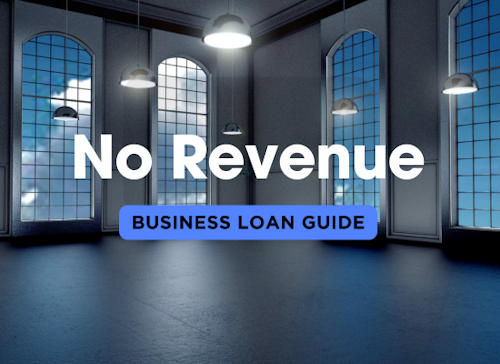Securing a business loan without any revenue may seem like a daunting task, but it is very possible. Whether you are a startup or an entrepreneur with a new idea, there are ways to secure the financing you need to get your business off the ground. This guide will walk you through the essential steps and strategies to increase your chances of obtaining a business loan even when your business has yet to generate income.
| IncBook: Tips for Getting a Business Loan with No Revenue | |
|---|---|
| Tip | Explanation |
| Build a Strong Business Plan |
A comprehensive and well-thought-out business plan is crucial when applying for a loan with no revenue. Your plan should include detailed market research, financial projections, and a clear path to profitability. Lenders want to see that you have a solid strategy in place to generate income and grow the business. |
| Leverage Personal Credit |
When your business has no revenue, lenders will often look at your personal credit score to assess risk. A strong personal credit score can improve your chances of securing a loan. Be sure to check your credit report, address any issues, and maintain a good credit standing before applying. |
| Offer Collateral |
Collateral can help mitigate the lender’s risk. Offering assets such as property, vehicles, or equipment as collateral can make you a more attractive borrower. This can also potentially lower your interest rate and improve loan terms. |
| Seek a Co-Signer |
If your business lacks revenue, a co-signer with strong credit and financial standing can help secure the loan. The co-signer agrees to take responsibility for the loan if you default, which reduces the lender’s risk and increases your chances of approval. |
| Explore Alternative Lenders |
Traditional banks may be hesitant to lend to businesses with no revenue, but alternative lenders, including online lenders and peer-to-peer lending platforms, often have more flexible requirements. Research and compare different lenders to find one that best suits your needs. |
| Demonstrate Market Potential |
Even if you have no revenue, showing that your business has strong market potential can be persuasive. This includes demonstrating demand for your product or service, securing letters of intent from potential clients, or providing evidence of pre-sales. |
| Consider a Startup Loan |
Some lenders specialize in startup loans, which are specifically designed for businesses with little to no revenue. These loans often have different criteria than traditional loans, focusing more on your business plan, experience, and market potential. |
Insider Tips and Strategies
1. Understand Lenders’ Perspectives
Before applying for a loan, it’s crucial to understand what lenders are looking for. Lenders want to minimize risk, so they assess your ability to repay the loan based on various factors beyond revenue.
Insider Tip: Highlight your industry experience, showcase a well-developed business plan, and emphasize any personal financial stability you have. Lenders will be more inclined to lend if they see that you understand the market and have a clear path to profitability.
2. Leverage Personal and Professional Networks
If your business doesn’t have revenue, your network can be a valuable asset. Reach out to mentors, advisors, or professionals in your industry who may be willing to vouch for you or even co-sign a loan.
Insider Tip: A strong referral or endorsement from a respected figure in your industry can significantly bolster your application. This demonstrates to lenders that you have the backing of someone with credibility and experience.
3. Explore Microlenders and Community Banks
While big banks may be hesitant to lend to a revenue-less business, microlenders, community banks, and credit unions often have more flexible lending criteria. These institutions are more focused on community development and may be more willing to take a chance on a promising startup.
Insider Tip: Build a relationship with your local bank or credit union. Regularly update them on your business progress, and demonstrate your commitment to the local community. This relationship-building can pay off when it comes time to apply for a loan.
4. Prepare Detailed Financial Projections
Even without revenue, you can present detailed financial projections that outline when and how your business will become profitable. These projections should be realistic, well-researched, and based on solid market data.
Insider Tip: Include multiple scenarios in your projections, such as best-case, worst-case, and most likely outcomes. This shows lenders that you’ve thought through the risks and have a plan in place to manage them.
5. Consider Securing a Line of Credit Instead
If a traditional loan seems out of reach, a business line of credit might be a more attainable option. Lines of credit offer flexibility, allowing you to draw funds as needed and only pay interest on what you use.
Insider Tip: Use a line of credit to cover initial expenses and build a history of repayment. This can make it easier to secure a larger loan later on when your business begins generating revenue.
6. Showcase Tangible Assets and Intellectual Property
If you have any tangible assets (like equipment, real estate, or inventory) or intellectual property (like patents or trademarks), these can be leveraged to secure a loan. Lenders view these as valuable collateral, reducing their risk.
Insider Tip: If you don’t have significant assets, consider obtaining a personal loan to purchase equipment or property that can then be used as collateral for a business loan.
7. Look for Government-Backed Loans and Grants
Government-backed loans, such as those offered by the Small Business Administration (SBA) in the United States, often have more lenient requirements for startups. Additionally, grants targeted at small businesses or specific industries can provide the funding you need without requiring repayment.
Insider Tip: Regularly check government websites for new programs or grants that might be available to your business. Tailor your applications to highlight how your business aligns with the goals of these programs.
8. Build a Solid Online Presence
In today’s digital world, lenders often check your online presence as part of their due diligence. A professional website, active social media profiles, and positive online reviews can strengthen your credibility.
Insider Tip: Invest in professional branding and content marketing to build a strong online presence. This not only helps with loan applications but also attracts potential customers and partners.
9. Consider Venture Capital or Angel Investors
If traditional loans are proving difficult, venture capital or angel investors might be a viable alternative. These investors are often willing to take on higher risks in exchange for equity in your business.
Insider Tip: Attend industry events and pitch competitions to connect with potential investors. Be prepared with a compelling pitch that clearly articulates your business model, growth potential, and exit strategy.
10. Use Business Credit Cards Wisely
While not a long-term solution, business credit cards can provide short-term financing and help build your business credit score. This can make it easier to secure larger loans in the future.
Insider Tip: Choose a business credit card with a low-interest rate and rewards that align with your business needs. Pay off the balance in full each month to avoid interest charges and build a strong credit history.
Getting a business loan with no revenue is challenging, but with the right strategies and insider tips, you can improve your chances of securing the financing you need. By understanding the lender’s perspective, leveraging your network, exploring alternative lenders, and presenting a strong case for your business, you can overcome the hurdle of no revenue and set your business on the path to success.



